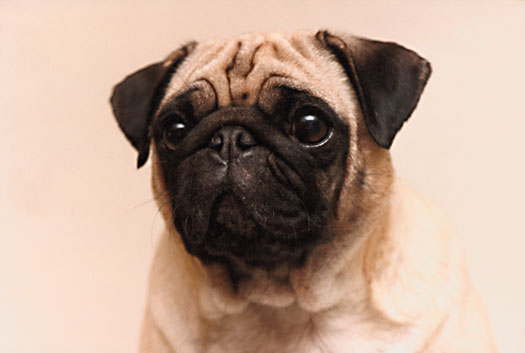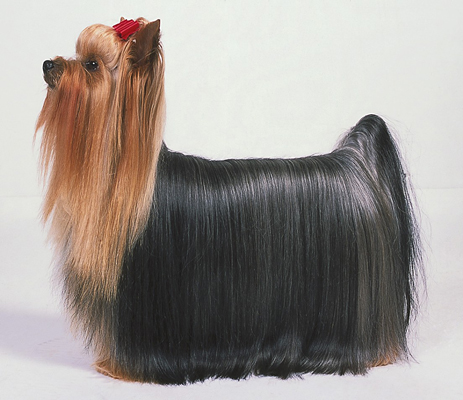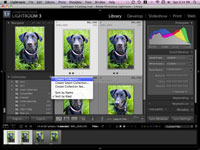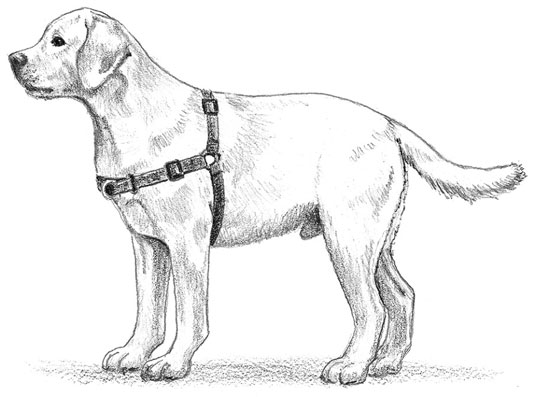Riconoscere le comuni lesioni da iguana
Un
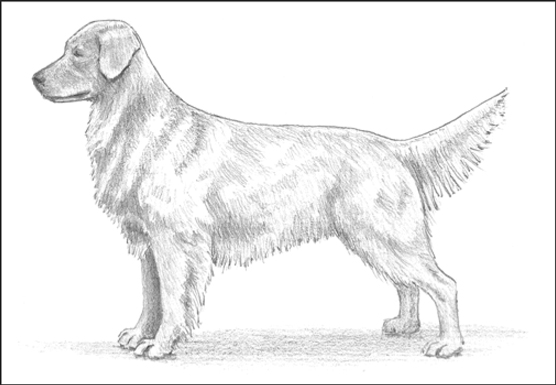
A caccia: Il Gruppo Sportivo
Illustrazione di Barbara Frake
I cani sportivi sono stati allevati per aiutare i cacciatori a localizzare, recuperare e stanare la selvaggina. Possono tracciare, inseguire, congelare e tornare con il premio. Due dei cani più popolari negli Stati Uniti - il Labrador Retriever e il Golden Retriever (mostrato) - appartengono a questo gruppo. I cani sportivi sono ottimi compagni di caccia e fantastici animali domestici; e sono fantastici con le famiglie attive. Hanno bisogno di molto esercizio e stimolazione.
L'AKC riconosce 26 razze nello Sporting Group. Le razze più popolari in questo gruppo - e quelle più spesso viste nei cani di razza mista - includono: Brittany, Chesapeake Bay Retriever, Cocker Spaniel, Setter inglese, Springer Spaniel inglese, Pointer tedesco a pelo corto, Golden Retriever, Setter irlandese, Labrador Retriever , Pointer, Vizsla e Weimaraner.
I cani sportivi variano da medio a grande - da 25 a 90 libbre, a seconda della razza. Tutti loro hanno orecchie che si piegano. I retriever hanno piedi palmati per aiutare a nuotare e hanno anche cappotti ad asciugatura rapida. I Setter hanno cappotti di media lunghezza con piume sulle gambe e sulla coda. Gli spaniel hanno cappotti più pieni, anche con piume sulle zampe e sulla coda. Sebbene molte delle razze Spaniel e Pointer abbiano la coda tagliata, nascono con quelle lunghe.
I cani sportivi sono atletici, ad alta energia, intelligenti e laboriosi. Hanno bisogno di un lavoro; se non hanno un lavoro, ti faranno impazzire cercando di trovarne uno per loro stessi. Amano annusare le tracce del gioco, tracciando con una sola mente fino a quando non trovano la fonte. Se c'è qualcosa in cui bagnarsi, anche una pozza di fango, puoi star certo che lo troveranno e non sarai in grado di tenerli fuori.
Tutte le razze del Gruppo Sportivo sono facilmente addestrabili e prosperano sulla struttura.
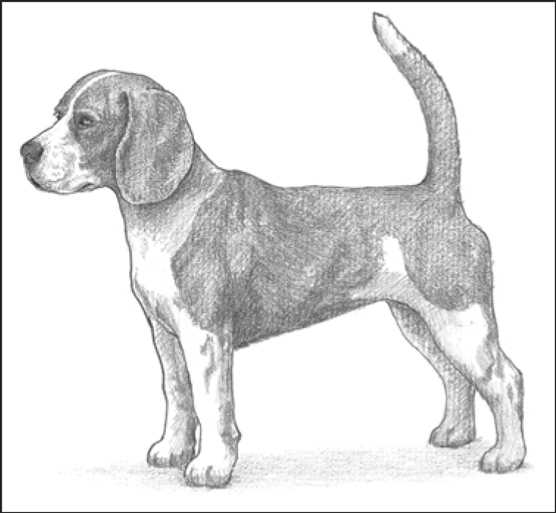
Non è altro che un segugio: The Hound Group
Illustrazione di Barbara Frake
Sebbene il Hound Group, che secondo l'AKC è composto da 23 razze diverse, includa alcune delle prime razze mai sviluppate per aiutare i cacciatori, non sono il tipo da puntare, stanare o recuperare (vedi lo Sporting Group). Invece, i cani da caccia seguono gli odori. Sono risoluti quando si tratta di localizzare la loro preda mirata.
I segugi si dividono in due categorie: quelli che cacciano all'olfatto e quelli che cacciano alla vista (chiamati levrieri).
I segugi più comuni, e quelli che si trovano spesso nei cani di razza mista, sono l'American Foxhound, il Bassett Hound, il Beagle (mostrato), il bassotto, l'inglese Foxhound, il Greyhound, l'Elkhound norvegese, il Rhodesian Ridgeback e diversi tipi di Coonhound. Fatta eccezione per il Greyhound, questi sono tutti cani da fiuto; tracciamento attraverso l'odore lasciato sul terreno.
Molti segugi hanno orecchie lunghe e setose; musi lunghi; e grandi gabbie toraciche. Alcuni hanno cappotti prevalentemente corti, mentre alcuni, come il levriero afgano, hanno cappotti lunghi che richiedono molta manutenzione.
La maggior parte delle razze all'interno del Gruppo Hound tende ad essere testarda, risoluta e difficile da addestrare se non adeguatamente motivata. I levrieri (come il Greyhound) sono generalmente energici; il minimo movimento cattura la loro attenzione.
Sebbene occasionalmente aggressivi nella caccia, i segugi sono raramente aggressivi con le persone, ma metteranno alla prova la tua pazienza.
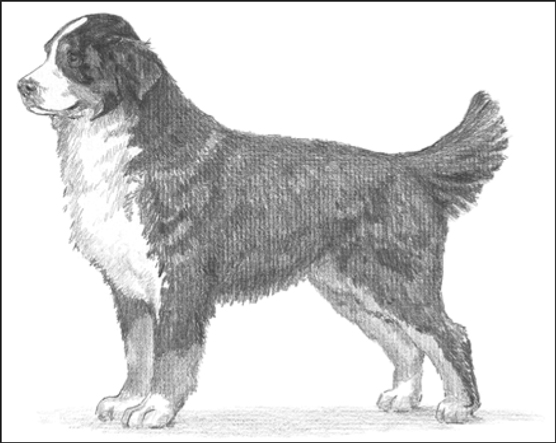
Lavorare come un cane: il gruppo di lavoro
Illustrazione di Barbara Frake
L'AKC riconosce 25 razze nel gruppo di lavoro. La maggior parte dei cani di questo gruppo sono grandi, audaci e resistenti. Sono stati allevati per lavorare per lunghe ore anche se non tutti hanno alti livelli di energia. I cani da lavoro fanno la guardia, tirano carichi pesanti, allevano e, negli ultimi anni, cercano e soccorrono.
Il Bovaro del Bernese non è comunemente visto nelle razze miste, ma è una grande rappresentazione del gruppo di lavoro.
Poiché la maggior parte di loro sono molto popolari come animali domestici, sono spesso visti nei cani di razza mista. Le razze più popolari in questo gruppo sono Alaskan Malamute, Boxer, Doberman Pinscher, Great Dane, Rottweiler e Siberian Husky. Sebbene meno popolari, l'Akita, il Mastiff e il San Bernardo si trovano anche in molte razze miste.
I cani da lavoro sono di ossatura grande, di corporatura forte e di forte volontà. Molti sono stati allevati per resistere a condizioni meteorologiche estreme, come le temperature artiche o il freddo del Nord Europa.
I cani da lavoro hanno un'intelligenza estrema e un'etica del lavoro risoluta. Sono resistenti, spesso energici e sono ottimi animali domestici purché ricevano una guida appropriata. Alcune di queste razze sono state allevate per combattere altri cani o proteggere le persone, quindi hanno l'istinto di essere assertive in molte situazioni e possono essere molto territoriali.
Le razze da lavoro non vanno bene se lasciate sole per lunghi periodi di tempo o legate. Questo potrebbe portare a comportamenti aggressivi e distruttivi.
Un mix contenente una di queste razze deve avere un regolare addestramento all'obbedienza e mantenere una programmazione rigorosa. Altrimenti, il cane crede di essere il responsabile della tua famiglia e tu non vuoi davvero avere a che fare con un cane grande e potente che pensa di essere al comando.
D'altra parte, dato un lavoro da svolgere, le razze da lavoro mettono tutto il cuore nel loro lavoro. Vogliono l'approvazione dei loro guardiani umani, ma l'attività da sola è un rinforzo positivo.
Lavorare come un cane: il gruppo di lavoro
Illustrazione di Barbara Frake
L'AKC riconosce 25 razze nel gruppo di lavoro. La maggior parte dei cani di questo gruppo sono grandi, audaci e resistenti. Sono stati allevati per lavorare per lunghe ore anche se non tutti hanno alti livelli di energia. I cani da lavoro fanno la guardia, tirano carichi pesanti, allevano e, negli ultimi anni, cercano e soccorrono.
The Bernese Mountain Dog is not commonly seen in mixed breeds, but he is a great representation of the Working Group.
Because most of them are very popular as pets, they’re often seen within mixed-breed dogs. The most popular breeds in this group are the Alaskan Malamute, Boxer, Doberman Pinscher, Great Dane, Rottweiler, and Siberian Husky. Though less popular, the Akita, Mastiff, and Saint Bernard are also found within many mixed breeds.
Working dogs are large boned, strong bodied, and strong willed. Many were bred to withstand extreme weather conditions, such as Arctic temperatures or the cold of Northern Europe.
Working dogs have extreme intelligence and steadfast working ethics. They are hardy, often energetic, and make great pets as long as they’re given appropriate guidance. Some of these breeds were bred to fight other dogs or protect people, so they have the instinct to be assertive in many situations and can be very territorial.
Working breeds do not do well if left alone for long periods of time or tied up. This might lead to aggressive and destructive behavior.
A mix containing any of these breeds must have regular obedience training and maintain strict scheduling. Otherwise, the dog believes he’s in charge of your household — and you really don’t want to deal with a large, powerful dog who thinks he’s in charge.
On the other hand, given a job to perform, Working breeds put their entire hearts into their work. They want approval from their human guardians, but the activity alone is positive reinforcement.
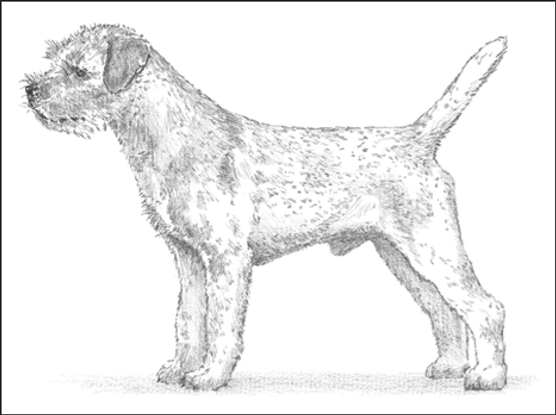
Tenacious terriers: The Terrier Group
Illustration by Barbara Frake
The AKC recognizes 27 breeds in the Terrier Group. Terriers are small-game hunters. Due to their genetic disposition to go after difficult game, they’re tenacious and single-minded while working; though their work is usually protecting their household and all those in it, while telling everyone what to do and how to do it.
The most common Terrier breeds seen within mixed-breed dogs are the Airedale Terrier, Cairn Terrier, Jack Russell Terrier (now called the Parson Russell Terrier), Miniature Schnauzer, Staffordshire Bull Terrier, the Pit-Bull Terrier (not a recognized AKC breed, but still a popular pet and recognized by the United Kennel Club), Scottish Terrier, and West Highland White Terrier.
Most of the terriers are medium to small in stature. Their coats are generally short and smooth or wiry and rough, with the exception of the Soft Coated Wheaten Terrier, Sealyham Terrier, and Skye Terrier, all of whom have longer, silkier coats than the other Terrier breeds.
There’s really no structural norm among the Terrier breeds. Their common threads lie more in personality. However, the taller of the Terriers — Airedale Terrier and Kerry Blue Terrier — do have some structural similarities in their long muzzles, fold-over ears, long necks, and long legs. The American Staffordshire Terrier and Bull Terrier have large egg-shaped heads and very muscular bodies with short smooth coats. The Scottish, Cairn, West Highland White, Norfolk, Norwich, Australian, and Border Terriers (shown) have short legs, long bodies, medium to long muzzles, and sharp high-set eyes, with short to medium-length tails. All these breeds also have a wiry, medium-length coat.
The Border Terrier is not commonly found in mixed-breed dogs, but they’re similar in size and coat to dogs such as the Cairn Terrier and Norwich Terrier.
Terriers are high energy, rebellious to authority, and more assertive than any other breed group. When riled up, they don’t readily back down. However, they do learn quickly as long as they’re properly motivated. Terriers require consistent training and guidance every day of the week, every week of the year. Terriers are easily excited, turning from upset-to-see-you-go to attacking the nearest creature they see because they were upset-to-see-you-go.
The last thing you ever show a Terrier is that you are apprehensive or hesitant. This is all they need to fully dominate you in every way — from how they prefer to be touched to possessive aggression and worse.
Although these dominant tendencies don’t occur in all Terriers, or in all mixed-breed dogs with Terrier heritage, carefully observe your own dog for these behaviors and deal with them accordingly; with obedience training.
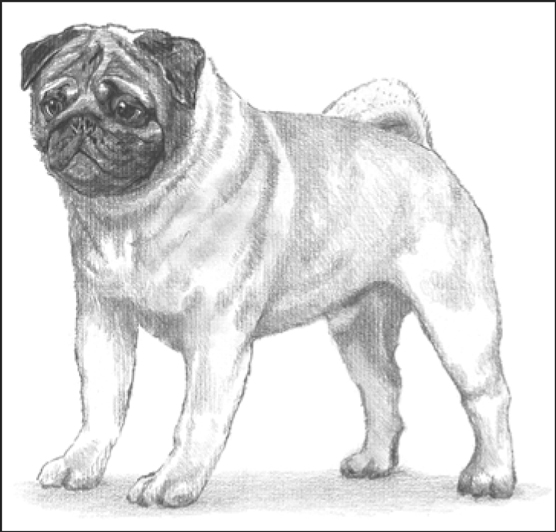
Big personalities in small packages: The Toy Group
Illustration by Barbara Frake
The AKC includes 21 breeds in the Toy Group. Toy breeds were initially developed from the major breed groups. Their parentage was chosen from the smallest of the lines, eventually forming the Toy breeds of today. Though they are their own individual breeds, they retain much of the genetic heritage of the breeds from which they were derived.
Toy dogs quickly adapt to any living environment. This makes them especially great traveling companions and pets for those who live in condominiums, apartments, or other community housing. Yet, they also do well living in a suburban neighborhood or in a rural setting, as long as they’re kept primarily indoors when you’re not with them.
The Toy Group consists of the following popular breeds that are very likely to be part of a mixed-breed dog’s heritage: Chihuahua, Maltese, Miniature and Toy Poodle, Pekingese, Pomeranian, Pug (shown), Shih Tzu, and Yorkshire Terrier.
The Pug is a key component in the super-popular mixed-breed Puggle, a mix of the Pug and Poodle. Any breed that’s part Poodle should inherit the Poodle’s good nature, intelligence, and longevity.
Rarely is a Toy breed larger than 14 inches tall at the shoulder. They also usually weigh less than 20 pounds. Being small is what constitutes the Toy dog label. Other than these attributes, however, they come in all shapes, fur lengths, and personalities. Some are very sensitive to weather conditions, and others are fairly hardy. Some can be easy to maintain, and others are time-consuming.
Big things come in small packages. Though small in stature, Toy breeds have big personalities. If you train and guide your Toy mixed breed, he’ll be a tiny gem — fun, loving, and loyal.
Despite their small size, they need to be treated just like bigger dogs — not like windup toys. They’re still dogs, and they have the same need for structure and understanding of their environment.
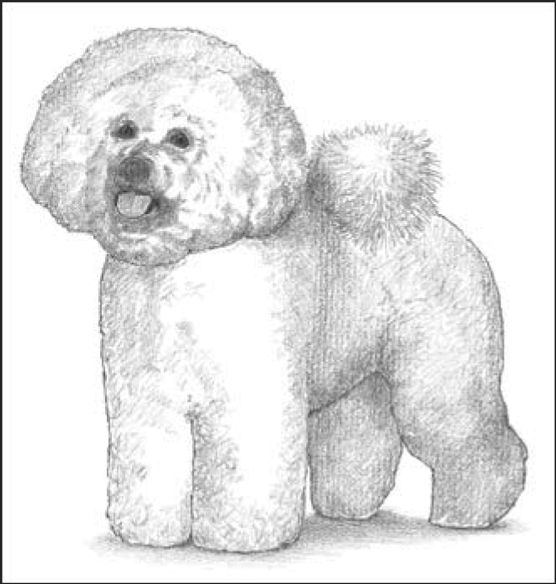
All shapes and sizes: The Non-Sporting Group
Illustration by Barbara Frake
The Non-Sporting Group includes 17 different breeds, in every shape and size imaginable, from the Standard Poodle to the Bulldog to the Dalmatian to the Chow Chow. Non-Sporting dogs are big, small, wide, and narrow. All are somehow related to other known breeds, though genetically specialized for specific jobs.
The most popular breed in this group, and the most likely to appear in a designer dog, is the Standard Poodle. The reasons for this dog’s popularity in the designer-dog set are numerous: They’re intelligent, loving, and energetic. They have great longevity. They can be almost any color, though black, white, and chocolate are the most common — and they don’t shed.
Other popular breeds found in mixed-breed dogs include the American Eskimo Dog, Bichon Frise (shown), Boston Terrier, Bulldog, Chinese Shar-Pei, Chow Chow, Dalmatian, and Lhasa Apso.
The Bichon Frise is a popular Non-Sporting Dog, with a happy and playful personality.
Brachiocephalic facial structure is a dog’s muzzle that has been specially bred to be very short to nearly nonexistent. Though this was initially done to improve the working ability of these dogs, it rarely has any purpose other than for appearance. Dogs who have this facial structure include Pugs, Shi Tzu, Pekingese, Boston Terriers, and Bulldogs.
Other than the Standard Poodle, Non-Sporting dogs are bold, challenging, and independent. They require lots of exercise and structured guidance through training and consistency.
The Standard Poodle has lots of energy but is easy to guide in the right direction. They have a high desire to work and love training challenges. Essentially, Poodles can learn anything and do anything, making them ideal dogs for designer-dog combinations. They overcome many of the behavioral and structural shortcomings of those breeds mixed with them.
All shapes and sizes: The Non-Sporting Group
Illustration by Barbara Frake
The Non-Sporting Group includes 17 different breeds, in every shape and size imaginable, from the Standard Poodle to the Bulldog to the Dalmatian to the Chow Chow. Non-Sporting dogs are big, small, wide, and narrow. All are somehow related to other known breeds, though genetically specialized for specific jobs.
La razza più popolare in questo gruppo, e la più probabile che appaia in un cane di design, è il barboncino standard. Le ragioni della popolarità di questo cane nel set di cani designer sono numerose: sono intelligenti, amorevoli ed energici. Hanno una grande longevità. Possono essere di quasi tutti i colori, anche se nero, bianco e cioccolato sono i più comuni e non perdono.
Altre razze popolari trovate nei cani di razza mista includono l'American Eskimo Dog, Bichon Frise (mostrato), Boston Terrier, Bulldog, Chinese Shar-Pei, Chow Chow, Dalmata e Lhasa Apso.
Il Bichon Frise è un popolare cane non sportivo, con una personalità allegra e giocosa.
La struttura facciale brachiocefalica è il muso di un cane che è stato appositamente allevato per essere molto corto o quasi inesistente. Sebbene ciò sia stato inizialmente fatto per migliorare le capacità lavorative di questi cani, raramente ha uno scopo diverso dall'aspetto. I cani che hanno questa struttura facciale includono Carlini, Shi Tzu, Pechinese, Boston Terrier e Bulldog.
Oltre al barboncino standard, i cani non sportivi sono audaci, stimolanti e indipendenti. Richiedono molto esercizio e una guida strutturata attraverso la formazione e la coerenza.
Il barboncino standard ha molta energia ma è facile da guidare nella giusta direzione. Hanno una grande voglia di lavorare e amano le sfide formative. In sostanza, i barboncini possono imparare qualsiasi cosa e fare qualsiasi cosa, rendendoli cani ideali per combinazioni di cani designer. Superano molte delle carenze comportamentali e strutturali di quelle razze mescolate con loro.
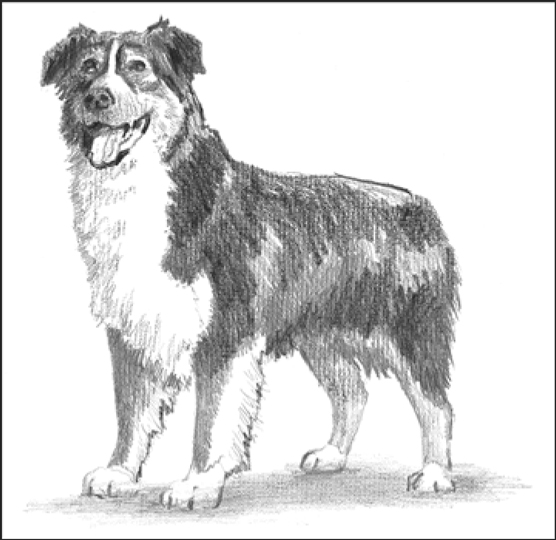
Arrotondali: il gruppo Herding
Illustrazione di Barbara Frake
Ci sono 18 cani nel gruppo Herding. E questi cani non solo li radunano, ma li spingono anche avanti. Sono stati allevati per aiutare pastori e agricoltori, lavorando lunghe giornate dure con tutti i tipi di tempo. Poiché sono stati allevati per lavorare in modo indipendente e in stretta sincronia con i loro gestori, molte razze Herding sono estremamente intelligenti.
Le razze più comuni all'interno del gruppo Herding, e quelle che più probabilmente si trovano all'interno di un cane di razza mista, sono Australian Cattle Dog, Australian Shepherd (mostrato), Border Collie, Cardigan Welsh Corgi, Collie, German Shepherd Dog, Old English Cane da pastore, Pembroke Welsh Corgi e cane da pastore delle Shetland.
L'Australian Shepherd è un classico cane da pastore e si trova comunemente nelle razze miste.
Le razze all'interno del Gruppo Herding vanno da quelle con zampe corte (come il Corgis) a quelle con zampe lunghe e flessuose (come il Collie). Sebbene nessuna di queste razze abbia un pelo corto, molte hanno uno spesso pelo medio e la maggior parte tende a una pelliccia lunga, facendole sembrare più simili agli animali per cui sono state allevate.
I cani da pastore hanno un'alta energia. Possono correre un'intera giornata e stancarti solo a guardare. I cani da pastore si comportano al meglio se gli è permesso di esercitare molto. Sono ancora meglio se ricevono una formazione costante su base giornaliera, infatti, prosperano su di essa. Poiché questi cani sono stati allevati per lavorare duramente e per lunghe ore, hanno bisogno dello sbocco fornito dalle attività di addestramento.
Le razze da pastore tendono ad apprendere compiti complicati più velocemente di qualsiasi altra razza, rendendole ideali per l'agilità, l'obbedienza, la pastorizia e molte altre occupazioni. Non sono grandi razze da avere intorno ai bambini piccoli, perché inseguono oggetti in movimento e li urtano intenzionalmente come mezzo per radunare il gregge. Tuttavia, sono animali domestici meravigliosi per le persone con stili di vita attivi.
Un
Scopri tutte le informazioni sul Carlino ideale, comprendendo le scelte da fare e le caratteristiche fisiche fondamentali, per portare a casa il cane perfetto per te.
Scopri i segreti della comunicazione delle iguane: postura, giogaia, movimenti e linguaggio corporeo. Guida completa per comprendere ogni sfumatura del loro comportamento.
Scopri le differenze chiave tra Rottweiler maschi e femmine. Confronto dettagliato su dimensioni, temperamento, addestramento e cure per aiutarti a scegliere il compagno perfetto.
Lo Yorkshire Terrier appartiene allAKC Toy Group per le sue dimensioni, ma ha il cuore e gli istinti di un vero Terrier. Scopri lo standard di razza e i dettagli indispensabili per i proprietari di Yorkie.
Scopri cosa fare se il tuo cane rimane impigliato con gli aculei di porcospino. Le informazioni utili per il benessere del tuo animale.
Scopri i problemi di salute comuni ai Jack Russell Terrier, tra cui cardiomiopatia e malattia di Von Willebrand. È fondamentale conoscere i sintomi e consultare un veterinario.
È ora di iniziare a organizzare tutte le foto del tuo cane! Lightroom ha alcuni strumenti organizzativi davvero fantastici, il cui punto cruciale è una piccola funzionalità chiamata Raccolte. Vedete, quando importi le foto in Lightroom, il software le aggiunge automaticamente al pannello Cartelle, attraverso il quale puoi navigare, proprio come navighi verso uno specifico […]
Man mano che il cucciolo matura e iniziano le lezioni, potresti voler passare da un collare o un'imbracatura di nylon a un collare di condizionamento o di addestramento, che scoraggia l'affondo, la trazione e la reattività generale e a un guinzaglio più robusto. Usa il rinforzo positivo per incoraggiare la concentrazione del tuo cucciolo. I collari condizionanti incoraggiano il tuo cucciolo a camminare vicino a te attraverso […]
A seconda delle attività esterne del tuo Jack Russell Terrier, dovresti lavarlo solo ogni mese o meno. Naturalmente, se il tuo terrier è fuori a rotolare nella terra ogni giorno, potresti doverlo bagnare un po' più frequentemente. I bagni brevi e più frequenti sono migliori di quelli lunghi e poco frequenti. Ottenere […]
